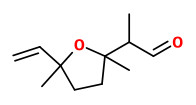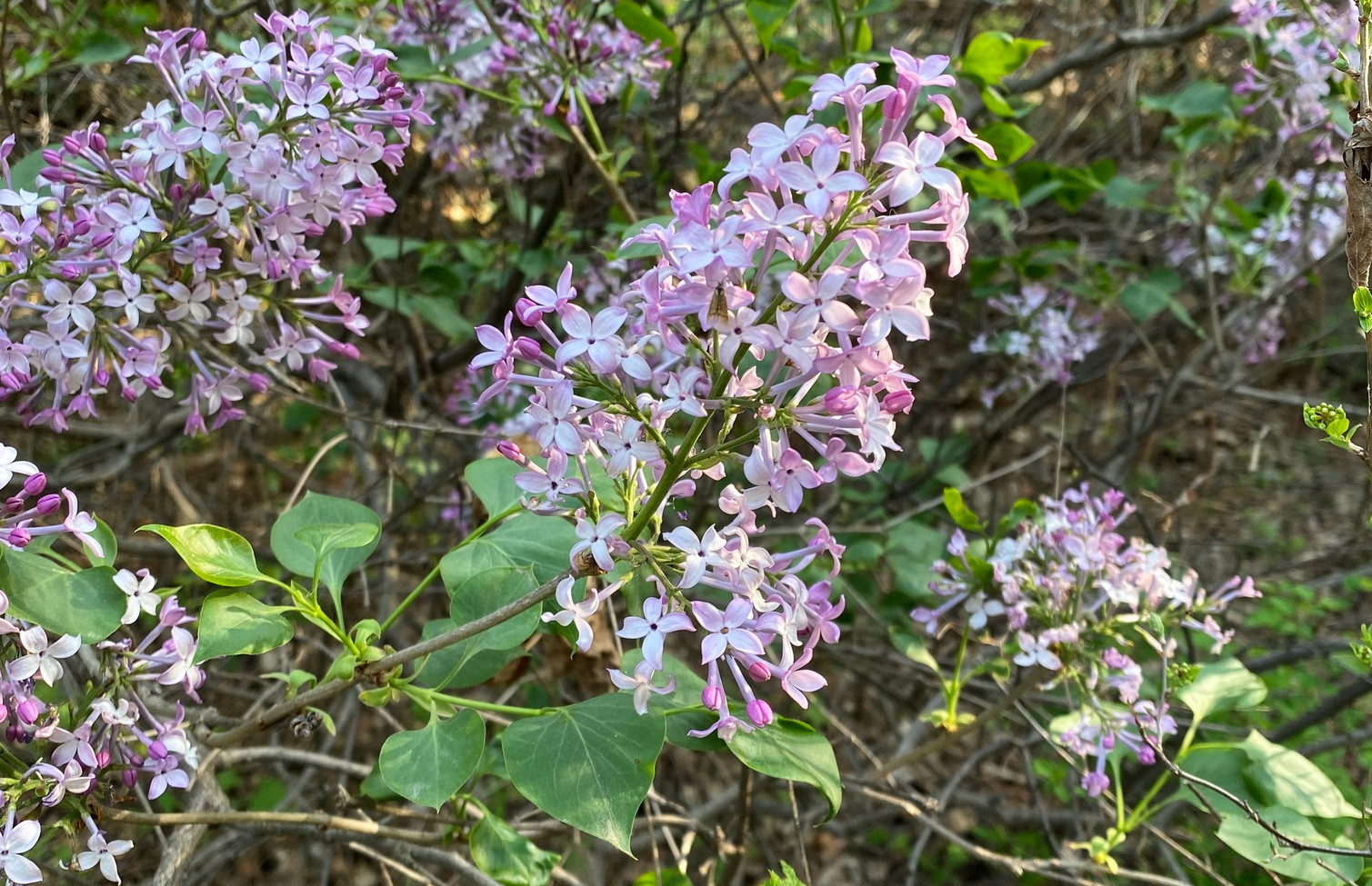Syringa oblata Lindl. - Oleaceae - broadleaf lilac, early blooming lilac, Rundblättriger Flieder
Shrub or small tree to 4m tall, native to China and Korea, cultivated and naturalized elsewhere; leaves ovate-orbicular to reniform; flowers fragrant, lilac (various shades), sometimes white.
Syringa oblata subsp. oblata = Syringa affinis L. Henry = Syringa giraldii Lemoine (leaves ovate-orbicular to reniform, usually slightly broader than long)
Syringa oblata subsp. dilatata = Syringa dilatata Nakai (leaves ovate to ovate-orbicular, usually slightly narrower than long)
http://www.ars-grin.gov/cgi-bin/npgs/html/taxon.pl?36099
http://www.efloras.org/florataxon.aspx?flora_id=2&taxon_id=200017813
There are hybrids like e.g. Syringa x hyacinthiflora = S. oblata x vulgaris. wikipedia
„The volatile compounds released from fresh flowers of S. oblata were separated and identified by GC-MS. Lilac aldehyde A, lilac aldehyde B, lilac aldehyde C, lilac aldehyde D, lilac alcohol A, lilac alcohol B, lilac alcohol C, lilac alcohol D, α-pinene, sabinene, β-pinene, myrcene, d-limonene, eucalyptol, cis-ocimene, benzaldehyde, terpinolene, linalool, benzene acetaldehyde, alpha-terpineol, p-methoxyanisole, p-anisaldehyde, (Z,E)-α-farnesene and (E,E)-α-farnesene were the most abundant volatiles released from fresh flowers of S. oblata var. alba. The relative contents of main volatile fragrance were found to be different in emissions from two varieties of S. oblata flowers (white or purple in color). The four isomers of lilac alcohol and four isomer lilac aldehyde were the characteristic components of the scent of fresh flowers of S. oblata.“
[Analysis of volatile compounds emitted from fresh Syringa oblata flowers in different florescence by headspace solid-phase microextraction-gas chromatography-mass spectrometry. Li ZG, Lee MR, Shen DL. Anal Chim Acta. 2006 Aug 18;576(1):43-9. Epub 2006 Mar 10.]
 lilac aldehyde(s) - eight stereoisomers
lilac aldehyde(s) - eight stereoisomers
[Synthesis, structure elucidation, and olfactometric analysis of lilac aldehyde and lilac alcohol stereoisomers., Kreck, M., Mosandl, A., Journal of agricultural and food chemistry, Vol.51(9), 2003, 2722-2726]

Syringa oblata, Beizhen, Jinzhou, Liaoning, CN (2024) © njeewrsey1 CC BY-SA 4.0 inaturalist.org

Syringa oblata (1-2) Flora of China
